| 4 February |
• yesterday • tomorrow |
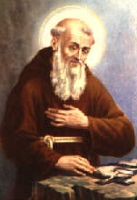
• Eufranio Desiderio
• Joseph Desideri
• Joseph of Leonissa
Third of eight children born to John Desideri, a wool merchant, and Serafina Paolini. His parents died when the boy was 12 years old, and he was raised and educated by his uncle Battista Desideri, a teacher in Viterbo, Italy. Desideri arranged a marriage for Eufranio with a local noble family, but the young man felt a call to religious life. Worry over his vocation, and fear of hurting his uncle, made Eufranio sick; he returned to Leonessa, Italy to recover. There he met, and was greatly impressed by, a group of Capuchin monks. When Eufranio told his uncle of his desire to join them, Desideri insisted that he continue his studies.
Eufranio agreed, and moved to Spoleto, Italy to do so, but kept in contact with the monks. Following a novitiate year in which the monks did everything to test and dissuade the young man, he joined the Capuchin Franciscans on 8 January 1573 at age 18, taking the religious name Joseph. Suffered through several self-imposed austerities including fasting three days a week and sleeping on bare boards. Ordained at Amelia, Italy on 24 September 1580. Preacher throughout the regions of Umbria, Lazio and Abruzzi regions of Italy. Father Joseph once converted an entire band of 50 highway bandits, who then showed up as a group for his Lent sermons.
Missionary to Muslim Pera near Constantinople (modern Istanbul, Turkey), receiving his commision on 1 August 1587. Chaplain for 4,000 Christian galley slaves. He often offered to take the place of some slave who was being worked to death, but the authorities never accepted. Ministering to prisoners in a remote camp, he once got home late, and was forced to sleep outside the walls of his assigned area; he was charged with being a spy for being in the wrong place, and spent a month in jail. He preached to any who would listen, brought lapsed Christians back to the Church and converted Muslims. Worked with prisoners during a plague outbreak.
Joseph repeatedly sought an audience with the Sultan; he planned to ask for a decree of religious freedom. His forceful methods led to his being arrested and condemned to death for trespassing on royal property. Hung by hooks over a smoky fire for three days, he was freed (legend says by an angel), and returned to Italy, in autumn 1589.
There he resumed his vocation of wandering preacher to small villages throughout the country. Preached to and for the poor, and spread the teachings of the Council of Trent. Helped establish hospitals, homeless shelters, and food banks. Ministered in prisons, to the sick, and the poor. With his crucifix in hand, he would wade into gang fights and brawls, praying, and preaching peace and good sense.
8 January 1556 at Leonessa, Umbria, Italy as Eufranio Desiderio
Saturday 4 February 1612 at Umbria, Italy of cancer and post-operative problems from surgery for that cancer
29 June 1746 by Pope Benedict XIV
Leonessa, Italy
with Saint Fidelis of Sigmaringen
Every Christian must be a living book wherein one can read the teaching of the gospel. This is what Saint Paul says to the Corinthians, 'Clearly you are a letter of Christ which I have delivered, a letter written not with ink, but by the Spirit of the living God, not on tablets of stone but on tablets of flesh in the heart' (2 Corinthians 3:3). Our heart is the parchment; through my ministry the Holy Spirit is the writer because 'my tongue is nimble as the pen of a skillful scribe' (Psalms 45:2). - from a sermon by Saint Joseph of Leonissa
https://catholicsaints.info/saint-joseph-of-leonessa/
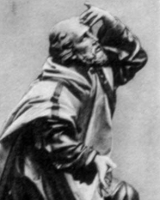
Aventin, Aventine
Almoner for Saint Lupus of Troyes and Saint Camelianus of Troyes; legend says that his wine barrel never ran dry. Hermit in a place now known as Saint-Aventin, France in his honour. People and animals sought refuge with him - animals hiding from hunters, people from their temptations.
Bourges, France
• c.538 of natural causes
• relics destroyed during the French Revolution
One day, according to his custom, Aventine quitted his cell and betook himself to a grove overlooking the vale of Aosta, that he might pray there quietly amidst its mysterious shade. On his knees, with uplifted eyes and glowing heart, he blessed God whom he inwardly adored. A very deep silence favoured his recollection, and his happy soul seemed to be as serene as paradise. Suddenly the silence was broken hy the plaintive roar of a bear which was laboriously coming down from the mountains. Aventine saw it, but was not alarmed; he knew that He who watched over Daniel in the den of lions would also watch over him. It was not the wild animals of the forest that were to shed his blood - this blood was reserved to gratify the rage of human persecutors far more savage than they. As if led by an invisible hand or by some kindly instinct the wounded animal came straight to him as quietly as a lamby and lifted its heavy paw in which was a long thorn, and laid it quite confidingly in the hands of Aventine, as if imploring help.
The servant of God kindly examined the wound and extracted the cruel thorn, and then the grateful bear left him after loading him with caresses.
This fact, which we have taken from the chronicle, is not without a certain authority. There still exists in a parish of the valley, and not far from the hermitage of Saint Aventine, another ruin, a precious remnant of the little oratory raised by the faithful to preserve the memory of this remarkable event. Tradition persistently reports that it is here that the Saint met the bear. A wood carving on the reredos of the church of Saint Aventine recalls this circumstance in the life of the Saint, and the old wood-work showed a similar incident. A bear was seen standing before the Saint, who was taking the thorn out of its paw with a pointed instrument. - from "The Little Bollandists" by Monsignor Paul Guérin, 1882
https://catholicsaints.info/saint-aventinus-of-troyes/
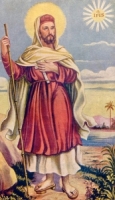
• Apostle of Madura
• John de Britto
• Jean, João
Born to the Portugese nobility, and a favourite of Don Pedro, king of Portugal. Son of the governor of Brazil. Jesuit at age 15. Studied at the University of Coimbra. Priest.
Against the strenuous objections of his family, he volunteered for the missions in India in 1673, and was sent to Madura. There he studied the complex Indian caste system, and found that most converts belonged to the lowest caste. He realized that for Christianity to have a lasting influence in India, higher caste members must also convert. Worked at Malabar, Tanjore, Marava, and Madura. He established himself as an Indian ascetic, a Pandara Suami, lived as they lived, dressed in saffron cloak and turban, and held retreats in the wilderness in southern India where interested Indians could visit him.
In time he was accepted as a Suami, his reputation grew, and though the locals would sometimes torture him, he converted as many as 10,000. Appointed superior of the mission in 1685. Among them was a prince whom he told to give up his wives. One of the wives, the niece of the rajah, had John imprisoned and tortured for a month, but being a religious man was no crime, so he was released.
His success in converting Indians to Christianity brought on the ire of the Brahmins, the highest Indian caste, and they decided to kill him. John and his catechists were imprisoned, tortured, and ordered to leave the country. When he refused, the rajah ordered John executed. At the execution site, he knelt in prayer, and the rajah's order was read. The executioner hesitated; John told him, "My friend, I have prayed to God. On my part, I have done what I should do. Now do your part." He did.
1 March 1647 at Lisbon, Portugal
dismembered and beheaded 4 February 1693 at Oreiour, India
22 June 1947 by Pope Pius XII
• Portugal
• Sivagangai, India, diocese of
• World Youth Day 2023
https://catholicsaints.info/saint-john-de-brito/
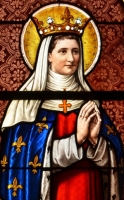
• Jéhanne de France
• Jeanne de Valois
• Joan of France
• Joan of Valois
• Duchess of Berry
• Queen Jane
• Queen Joanna
Born a princess, the daughter of King Louis XI of France and Charlotte of Savoy. Cousin of Blessed Louise of Savoy. Deformed at birth and sickly through her life, she early developed a devotion to Our Lady, and the praying of the Angelus. Married at age 9 for political reasons to Louis, Duke of Orleans. Believing it her duty, she developed tender feelings for him, prayed for him, and praised him to others; when he because King Louis XII, he had their marriage anulled by Pope Alexander VI. Made Duchess of Berry (in modern France) which province she ruled. With her Franciscan spiritual advisor Blessed Gabriel Mary, she founded the Order of the Annonciades or Order of the Annunciation of the Blessed Virgin Mary, whose chief rule was to imitate the virtues of Mary as described in the Bible.
23 April 1464 in Nogent-le-Roi, County of Dreux (in modern France)
• 4 February 1505 at Bourges, France of natural causes
• buried in the chapel of the Annonciade monastery
28 May 1950 by Pope Pius XII (her Cause had been submitted in 1614)
Order of the Annunciation of the Blessed Virgin Mary
• crowned Annunciation abbess
• Annunciation abbess with a cross and rosary
• Annunciation abbess holding the hand of the Christ-child who is himself holding a basket
• Annunciation abbess with basket of bread and cup of wine
• with Blessed Gabriel Mary
• having a ring placed on her finger by the Christ-child
https://catholicsaints.info/saint-jane-of-valois/

Son of the wealthy Norman knight Jocelin. When Gilbert showed no signs of becoming a soldier, his father exiled him to Paris, France to study. Gilbert returned to England as a master of arts, and opened a school for the children of the poor in Sempringham, paying special attention to training in religion. His father provided him a living from the rents on part of his lands in Sempringham and Tirington, but Gilbert redistributed most of this to the poor. Clerk in the household of bishop Robert Bloet of Lincoln, England. Ordained at age 40. When his parents died in 1130, Gilbert returned to the manor and began to spend his inheritance by founding Benedictine and Augustinian monasteries, and by providing for the poor. He drew up rules for an order of nuns later known as the Gilbertines, the only order founded on a rule designed by an Englishman, and which eventually grew to 26 houses before being suppressed in the persecutions of King Henry VIII. Gilbert was the target of slander, once accused of helping the exiled Saint Thomas Becket, which accusation landed him in prison. When he was 90 years old, some of Gilbert's lay brothers revolted against his authority, but Pope Alexander III supported Gilbert. He became blind in his old age, put aside all rule of the lands and the orders, devoted himself to prayer and the communal life, and lived to be over 100 years old.
1083 at Sempringham, Lincolnshire, England
1189-1190 at Sempringham, England of natural causes
1202 by Pope Innocent III
Life of Saint Gilbert, Prior of Sempringham, by Father John Dobree Dalgairns
https://catholicsaints.info/saint-gilbert-of-sempringham/

• Hrabanus Maurus
• Maurus Magnentius Rabanus
• Reabanus Maurus
• Rhabanus Maurus
He grew up in the abbey in Fulda, Germany. Spiritual student of Saint Alcuin of Tours and Saint Eigil. Benedictine monk. Headmaster of the abbey school. Deacon. Priest. Abbot. Bishop of Mainz, Germany. Noted for his charity, feeding up to 300 poor people at his house each day. Promoted the education of the clergy. Wrote bible commentaries, homilies, poetry, including one that praised and preserved the memory of Saint Frederick of Utrecht.
776 at Mainz, Germany
• 4 February 856 at Winkel, Germany of natural causes
• buried in the monastery of Saint Alban at Mainz, Germany
• relics were transferred to Halle, Germany by Archbishop Albrecht of Brandenburg
https://catholicsaints.info/blessed-rabanus-maurus/
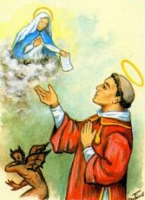
Archdeacon and treasurer of the church in Adana, Cilicia (in modern Turkey). Offered the bishopric of Adana, he declined, saying he was not adequate to the task. Due to slander accusing him of theft of church funds, the new bishop removed him from his position. In anger, Theophilus signed a pact with a demon to avenge himself on the bishop and regain his position. When he came to his senses, he begged for the help of Our Lady who intervened, recovered the pact, and tore it up. The pact was burned in the public square, and this legend has figured in many dramas since, including Goethe's Faust.
c.538
archdeacon making a pact with the devil from which he is rescued by the Virgin; sometimes she is shown handing him back the contract, usually shown in the form of a scroll
https://catholicsaints.info/saint-theophilus-the-penitent/

As a young man Nicholas studied at the Studius monastery in Constantinople, and became a monk at age 18. He was exiled during the years of the iconoclast persecutions. Abbot of his house upon his return. When emperor Michael replaced Saint Ignatius of Constantinople with Photius as patriarch of Constantinople, Nicholas openly opposed him, and was sent again into exile. When emperor Basil restored Ignatius as patriach in 858, Nicholas returned to his monastery. However, by this point he was feeling the weight of his years, and spent his remaining days as a simple monk.
in Sydonia, Crete
863 at Studius monastery, Constantinople of natural causes
https://catholicsaints.info/saint-nicholas-studites/
Maden, Maudan
Son of a chieftain. Monk at Dryburgh Abbey in 522 where he gave himself over to prayer 7 to 8 hours a day. Preacher at Stirling, Falkirk, and along the Forth in Scotland. Reluctant abbot at Dryburgh Abbey. In his later years he retired to become a hermit at Dumbarton, Scotland. Legend says that he would be requested during dry seasons; he would stick his staff in the ground and a spring of water would emerge; he would then go straight back to his hermitage.
Ireland
• 6th century at Dumbarton, Scotland of natural causes
• relics at Saint Modan's church, Rosneath, Scotland
• against drought
• against dysentery
https://catholicsaints.info/saint-modan/

Hermit. Monk. Abbot. Theologian. Priest. In his desert monastic life, he tried to imitate the life and mission of Saint John the Baptist. A prolific correspondent, he wrote over 10,000 known letters, many with advice, encouragement and theological thought; over 2,000 have survived. Held in high regard by Saint Cyril of Alexandia.
c.375 at Alexandria, Egypt
c.449-450
https://catholicsaints.info/saint-isidore-of-pelusium/
Gilla, Gille, Gillebert, Gilli
Priest. Worked in Rouen, France from 1103 to 1106. Apostolic delegate to Ireland from the papacy of Pope Paschal II c.1106. Chosen bishop of Limerick, Ireland in 1107. With Saint Malchus of Waterford and Ceallach of Armagh, he helped reorganize the Church in Ireland, replacing monastic rule with that by the bishops and diocesan structure, and advocating for a uniform liturgy. Gilbert retired from his position as papal legate in 1139, and from hisbishopric in 1140.
c.1145 of natural causes
https://catholicsaints.info/saint-gilbert-of-limerick/
Born to the Italian nobility, Angela became a Dominican nun at the Santa Caterina convent in Ferrara, Italy. She was known as a beautiful, pious woman who was endlessly devoted to prayer, and served as prioress of her house for the last few months of her life.
latter 15th century in Ferrara, Italy
• 4 February 1512 at the convent of Santa Caterina in Ferrara, Italy of natural causes
• she is reported to have predicted the date of her death
https://catholicsaints.info/blessed-angela-serafina-correggiari/
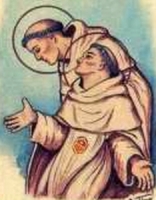
Dionysius de Vilaregut
Born to the nobility. Mercedarian monk at the convent of San Eulalia, Montpellier, France. Exceptionally pious, even for a man in religious life. In 1239 he worked with Blessed Alfonso de Meneses to rescue prisoners in the cities of Jativa and Granada; together they freed 316 people held as slaves by the Moors.
https://catholicsaints.info/blessed-dionisio-de-vilaregut/

Alphonse de Meneses
Born to the nobility. Mercedarian friar at the convent of San Eulalia, Montpellier, France. Exceptionally pious, even for a man in religious life. In 1239 he worked with Blessed Dionisio de Vilaregut to rescue prisoners in the cities of Jativa and Granada; together they freed 316 people held as slaves by the Moors.
https://catholicsaints.info/blessed-alfonso-de-meneses/
29 March (Cistercian martyrology)
Agnes was raised in a pious family; her father became a Benedictine monk and priest. She became a Cistercian nun at the monastery of Gnadenthal in Hünfelden, Hesse, Germany, and was chosen abbess of the house in 1400.
latter 14th century Büren, Germany
early 15th century at the monastery of Gnadenthal in Hünfelden, Hesse, Germany of natural causes
https://catholicsaints.info/blessed-agnes-of-buren/
• John Spence
• one of the Martyrs of England and Wales
• one of the Durham Martyrs
Layman. Martyred for befriending and protecting Catholic priests, including Saint John Boste, during the persecutions of Elizabeth I.
at Durham, England
4 February 1594 at Durham, England
15 December 1929 by Pope Pius XI
https://catholicsaints.info/blessed-john-speed/
• Phileas of Thmuïs
• Fileas...
26 November (Eastern calendar)
Bishop of Thmuïs, Egypt. Imprisoned in Alexandria, Egypt for his faith. Martyred with approximately 600 Christians in the persecution of Maximian Galerius.
Egyptian
c.311 in Alexandria, Egypt
https://catholicsaints.info/saint-phileas-of-alexandria/
Born to the French nobility. Brother of Saint Solemnis of Chartres. Bishop of Chateaudun, France. Bishop of Chartres, France from c.511. Supported the Acts of the Council of Orleans.
• c.520 in Châteaudun, near Chartres, Gaul (modern France) of natural causes
• relics re-interred in 1853
https://catholicsaints.info/saint-aventinus-of-chartres/
Cristiano
Twelfth century Cistercian monk at the Himmerod Abbey in Grosslittgen, Germany. Noted for his humility, spirit of penance, and devotion to the Blessed Virgin Mary; tradition says that Mary appeared to him at the moment of his death to welcome him to the after-life.
https://catholicsaints.info/blessed-christian-of-himmerod/
Knight. He narrowly escaped drowning, and during the experience he had a vision of Hell which changed his life. He became a Benedictine monk at Brescia, Italy doing penance and working for the nearby Benedictine convent.
in Brescia, Italy
c.1204 of natural causes
1900 by Pope Leo XIII (cultus confirmed)
https://catholicsaints.info/saint-obitius/
Philoromus
26 November (Eastern calendar)
Martyred with approximately 600 Christians in the persecution of Maximian Galerius for objecting to the harsh treatment of Saint Phileas of Alexandria.
c.311 in Alexandria, Egypt
https://catholicsaints.info/saint-filoromus-of-alexandria/
Léoffort, Leoffortus, Liefard, Lieffardus, Lietfardus, Lietphardus, Lifardus, Liffardus, Liphard, Liphardus, Luitwardus
Bishop. Travelled with King Caedwalla on pilgrimage to Rome, Italy. Martyred on the return trip to England.
England
640 near Cambrai, France
https://catholicsaints.info/saint-liephard/
• Aldate of Caer Loew
• Aldad, Eldad, Eldadus, Eldate
Bishop of Gloucester, England. He rallied his flock and fellow citizens to resist invasion by pagans from western Britain.
Britain
5th century
https://catholicsaints.info/saint-aldate/
Irma, Irmtruda
13th-century Poor Clare nun. Correspondent with Saint Clare of Assisi. Founded Poor Clare monasteries in several Flemish cities, including in Brugge, Belgium.
https://catholicsaints.info/blessed-irmtrud/
Martyred in the persecutions of Diocletian.
starved and then thrown into a well in the early 4th century along the Appian Way outside Rome, Italy
https://catholicsaints.info/saint-eutychius-of-rome/
Cuona, Cuannachaeus
Seventh century bishop of Lismore, Ireland. Monk. Abbot at Cuannach, Ireland. Abbot of Connacie, Ireland.
https://catholicsaints.info/saint-cuanna-of-lismore/
Benedictine monk at New Corbie Abbey, Saxony (in modern Germany). Worked with Saint Ansgar, preaching to pagans in Scandinavia. Martyred by pagan Swedes.
845
https://catholicsaints.info/saint-nithard/
Benedictine monk. Abbot of Lobbes Abbey, Belgium. Bishop in the Hainault region of Belgium.
c.760 of natural causes
https://catholicsaints.info/saint-vulgis-of-lobbes/
Bishop of Irenopolis, Asia Minor (in modern Turkey). Attended the Council of Nicaea in 325. Worked against Arianism.
https://catholicsaints.info/saint-john-of-irenopolis/
Evangelizing bishop of Troyes, France from c.536 until his death.
c.546 of natural causes
https://catholicsaints.info/saint-vincent-of-troyes/
Third century martyr.
martyred at Fossombrone, Italy
https://catholicsaints.info/saint-aquilinus-of-fossombrone/
Third century martyr.
martyred at Fossombrone, Italy
https://catholicsaints.info/saint-gelasius-of-fossombrone/
Third century martyr.
martyred at Fossombrone, Italy
https://catholicsaints.info/saint-donatus-of-fossombrone/
Third century martyr.
martyred at Fossombrone, Italy
https://catholicsaints.info/saint-geminus-of-fossombrone/
Third century martyr.
martyred at Fossombrone, Italy
https://catholicsaints.info/saint-magnus-of-fossombrone/
Martyr.
Genoa, Italy
https://catholicsaints.info/saint-firmus-of-genoa/
Themius
Martyr.
https://catholicsaints.info/saint-themoius/
A group of shepherds martyred in the persecutions of Decius. The only details we have about them are the names - Claudian, Conon, Diodorus and Papias.
c.250 in Perga, Asia Minor (in modern Turkey)
https://catholicsaints.info/martyrs-of-perga/
A collective memorial of all members of the Jesuits who have died as martyrs for the faith in Japan.
• Blessed Ambrose Fernandez
• Blessed Antonius Kyuni
• Blessed Antony Ixida
• Blessed Augustine Ota
• Blessed Baltasar de Torres Arias
• Blessed Camillus Costanzo
• Blessed Carlo Spinola
• Blessed Charles Spinola
• Blessed Didacus Yuki Ryosetsu
• Blessed Diego Carvalho
• Blessed Dionysius Fugixima
• Blessed Francisco Pacheco
• Blessed Giovanni Battista Zola
• Blessed Gundisalvus Fusai Chozo
• Blessed Gundisalvus Fusai Chozo
• Blessed Ioannes Chugoku
• Blessed Ioannes Kisaku
• Blessed Iulianus Nakaura
• Blessed Jerome de Angelis
• Blessed John Baptist Machado de Tavora
• Blessed Ludovicus Kawara Rokuemon
• Blessed Michaël Sato Shunpo
• Blessed Michaël Tozo
• Blessed Paulus Shinsuke
• Blessed Petrus Kasui Kibe
• Blessed Petrus Rinsei
• Blessed Petrus Sanpo
• Blessed Sebastianus Kimura
• Blessed Simon Yempo
• Blessed Thomas Akahoshi
• Blessed Thomas Tsuji
• Blessed Vincentius Kaun
• Saint James Kisai
• Saint John Soan de Goto
• Saint Paul Miki
• Saint Paul Suzuki
https://catholicsaints.info/jesuit-martyrs-of-japan/
• Our Lady of Fire
• Ammonisia
• Elisabetta Amodei
• Gemolo
• Imerio di Bosto
• Lifardus of Canterbury
CatholicSaints.Info Portable Edition